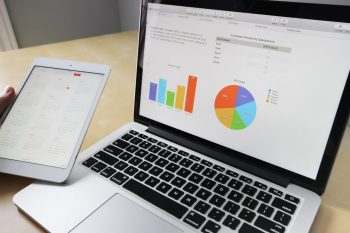Take a look at the advantages and disadvantages of the face-to-face data collection method
As with any research project, data collection is incredibly important. However, several aspects come into play in the data collection process. The three most crucial aspects include: the cost of the selected data collection method; the accuracy of data collected; and the efficiency of data collection.
Despite the rise in popularity of online surveys, face-to-face (in-person) survey interviewing on mobile devices or paper surveys still remain popular data collection methods. Advanced survey platforms offer offline survey interviewing when a reliable connection is not available on a mobile device.
A face-to-face interview provides advantages over other data collection methods. They include:
- Accurate screening. Face-to-face interviews help with more accurate screening. The individual being interviewed is unable to provide false information during screening questions such as gender, age, or race. It is possible to get around screening questions in online and mobile surveys. Online and mobile surveys that offer incentives may actually encourage answer falsification. Individuals may enter incorrect demographic information so they are able to complete the survey and gain the incentive. The answers the individual provides may all be truthful, but for the purpose of data analysis, the data will be inaccurate and misleading.
- Capture verbal and non-verbal ques. A face-to-face interview is no doubt going to capture verbal and non-verbal ques, but this method also affords the capture of non-verbal ques including body language, which can indicate a level of discomfort with the questions. Adversely, it can also indicate a level of enthusiasm for the topics being discussed in the interview. Let’s discuss an employee job interview, for example. Capturing non-verbal ques may make the difference between selecting an employee that is less skilled, but displays a tremendous amount of enthusiasm for the position. Capturing non-verbal ques is not possible in online or mobile surveys.
- Keep focus. The interviewer is the one that has control over the interview and can keep the interviewee focused and on track to completion. Online and mobile surveys are often completed during time convenient for the respondent, but are often in the midst of other distractions such as texting, reading and answering emails, video streaming, web surfing, social sharing, and more. Face-to-face interviews are in-the-moment, free from technological distractions.
- Capture emotions and behaviors. Face-to-face interviews can no doubt capture an interviewee’s emotions and behaviors. Similar to not being able to capture verbal and non-verbal ques, online and mobile surveys can also not capture raw emotions and behavior.
As with any data collection method, face-to-face interviews also provide some disadvantages over other data collection methods. They include:
- Cost. Cost is a major disadvantage for face-to-face interviews. They require a staff of people to conduct the interviews, which means there will be personnel costs. Personnel are the highest cost a business can incur. It’s difficult to keep costs low when personnel are needed.
- Quality of data by interviewer. The quality of data you receive will often depend on the ability of the interviewer. Some people have the natural ability to conduct an interview and gather data well. The likelihood of the entire interviewing staff having those skills is low. Some interviewers may also have their own biases that could impact the way they input responses. This is likely to happen in hot-topic opinion polls.
- Manual data entry. If the interview is administered on paper, the data collected will need to be entered manually, or scanned, if a scannable interview questionnaire is created. Data entry and scanning of paper surveys can significantly increase the cost of the project. A staff of data entry personnel will need to be hired. Additionally, data entry can prolong the analysis process. Mobile surveys on iPads, tablets, or other mobile devices can cut-down on manual data entry costs and information is ready for analysis.
- Limit sample size. The size of the sample is limited to the size of your interviewing staff, the area in which the interviews are conducted, and the number of qualified respondents within that area. It may be necessary to conduct several interviews over multiple areas, which again can increase costs.
Learn more about a survey platform for face-to-face data collection



